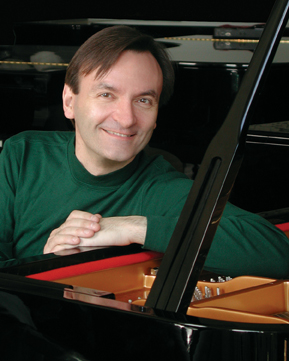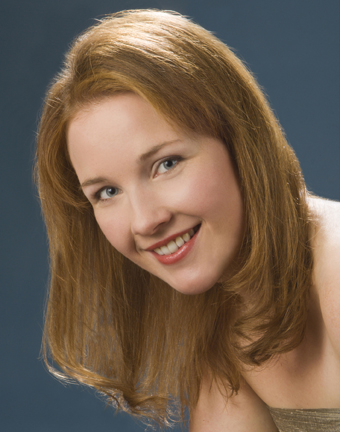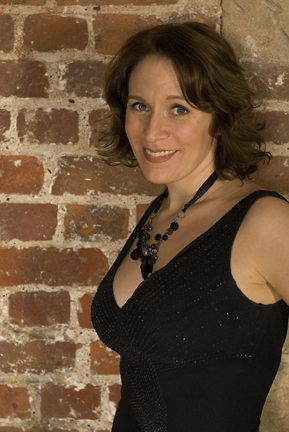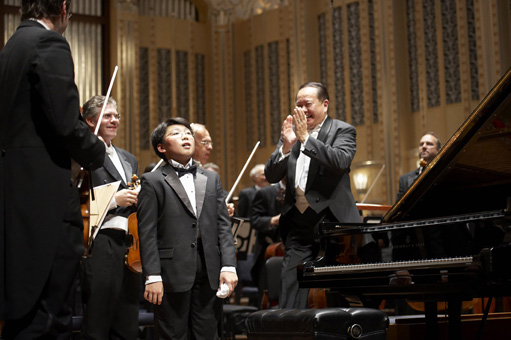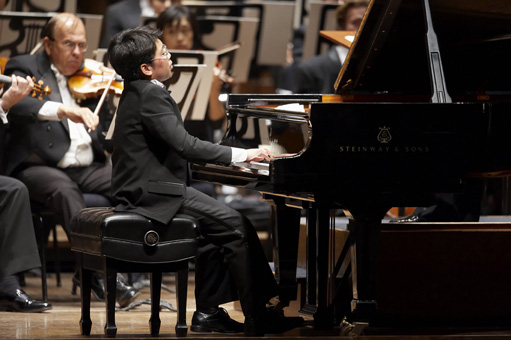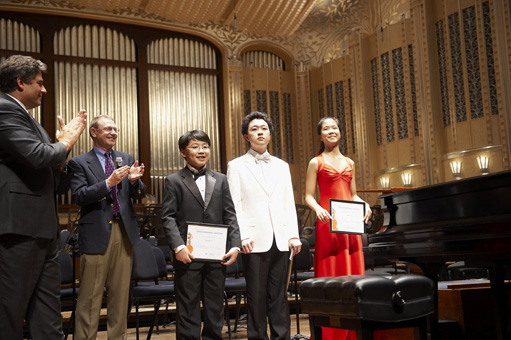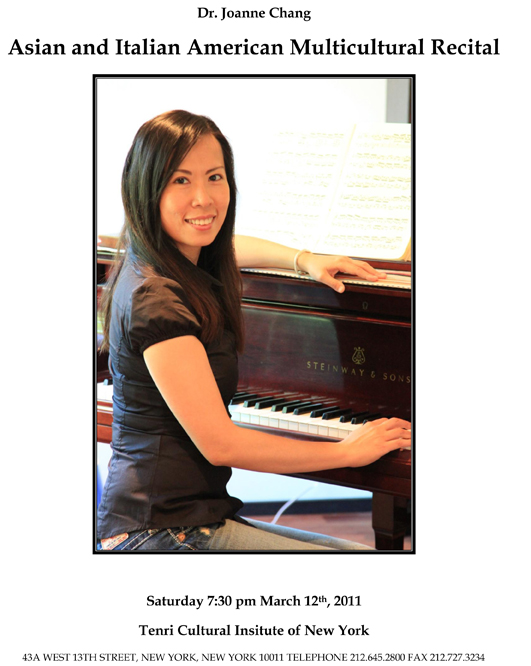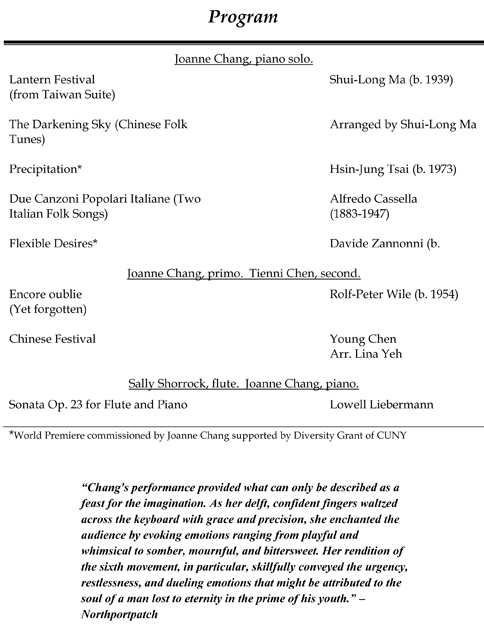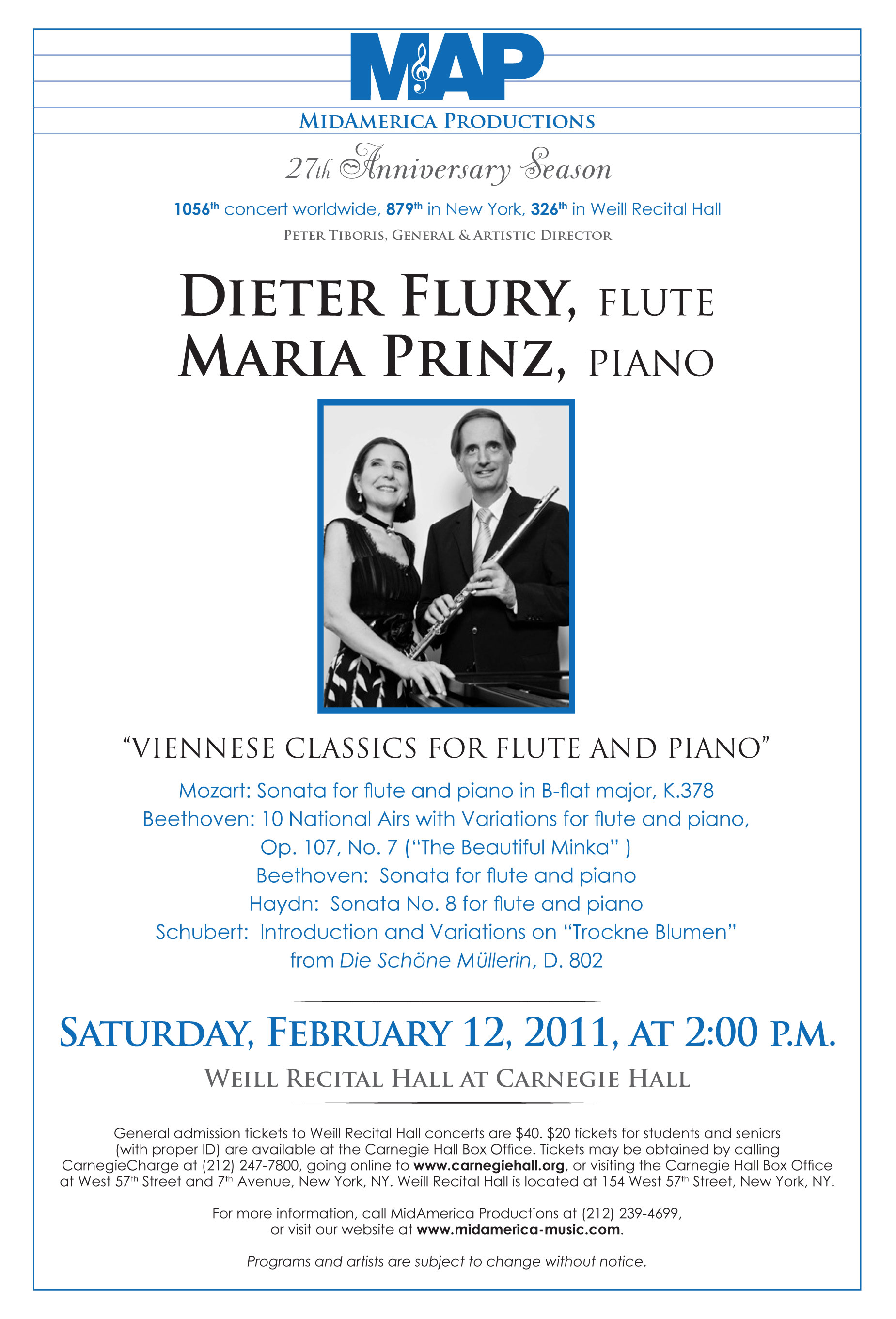It takes a lifetime of experience to feel secure when preparing an article, short story, or commentary on a particular subject that could be interpreted as controversial, or possibly vindictive. We feel, however, that these adjectives do not apply to our particular argument.
As pianists, educators, composers, directors of a highly successful school of the arts for 39 years, and now founding/directors of the New York International Piano Competition since 2002, we feel compelled to comment on the state of piano competitions accessible to participants worldwide.
Our basic premise is to offer young, aspiring pianists the opportunity of achieving their personal and professional goals through mentoring, career guidance, artistic development, and performance opportunities throughout the year. Individuality and excellence are mainstays of The Stecher and Horowitz Foundation’s core objectives, focusing the young artists’ horizons toward the pursuit of a realistic and attainable career in music.
The New York International Piano Competition was created after studying and observing competitions worldwide. We were determined to offer serious piano students and young aspiring artists (ages 16-21) the opportunity to compete in an environment that was constructive, educational, musically sound, and ethically without equal. We studied the procedures and requirements of dozens of competitions, carefully observed the juries, made note of the prizes given; and, above all, analyzed the final performance opportunities and follow-through offered. These determinations were made either by reading the competition requirements in print or by speaking to contestants, jury members, teachers, and fellow directors.
We were determined to approach our concept of a unique piano competition, offering specific areas that were not part of any other known competition. Our most important innovation was to be the very first that included No Elimination at any time. Once an applicant was accepted to be a contestant, it was guaranteed and stated that the contestant would have the opportunity of performing in all rounds and be able to compete from the very first day through the end of the competition. We specifically limited the number of contestants to 22, affording each the opportunity of being heard throughout the entire week. This concept would be impossible if we were to accept 35-40 contestants. We feel it an injustice to accept applicants from all over world, only to send them home after being eliminated after the first or second round. Nothing could be more devastating to a young, ambitious potential. Our concept thrilled every applicant, and it took the fear and hesitancy out of applying. It was stated and again assured that in addition to the prizes awarded to the winners, a cash amount of $1,000 would be presented to each of the remaining contestants.
The application was posted on the website of The Stecher and Horowitz Foundation as well as referred to in all publicity announcing the competition; publicity that was sent to every conservatory, music institution, well-known private teacher, and music studio. The response was overwhelming, and extremely gratifying.
There is no need to refer to the requirements printed within the application, but mention is made at this time that it requires a full understanding of repertoire embracing music from the baroque, classical, romantic and contemporary periods. In addition, another first is the inclusion of a round devoted to one-piano four hand repertoire, selected by the directors and sent to contestants accepted 10 weeks prior to the beginning of the competition. Teams are determined at the opening ceremonies by drawing, and within five days, the experience of playing with a partner is enhanced through coaching sessions with caring, enthusiastic and highly skilled musicians.
Another first has been the commissioning of a contemporary work, also sent out ten weeks before the competition commences. In 2006, the commissioned work was composed by Michael Torke, and in 2008, it was John Musto. For the just completed 2010 competition, it was the decision to utilize an existing exciting work and the composition selected was the second and demanding movement from the Sonata No. 2: II Agitato by the Israeli composer Avner Dorman. The intense excitement generated by both the contestants and the jury is hard to describe. It is interesting to note that in addition to the First, Second, Third, and Fourth Prizes awarded, there is a First Prize and a Second Prize for the One-Piano Four Hands Ensembles, and a separate prize for the Best Performance of the Required Contemporary Work. Imagine all the opportunities every contestant is given by being able to compete all week long and in so many different musical categories.
As you can see, we are extremely proud of the opportunities we are affording these young, aspiring artists. Our hearts are with them every moment they are in New York City, and it is an enormous undertaking, awe-inspiring, exhilarating, and tremendously demanding.
Now, we come to the crux of the problem, and the subject that generated this article. We feel that a healthy competition that embraces honesty, integrity, fairness, sensitivity and ethics is a must for developing young artists. As a point of reference, the duo-pianists Stecher and Horowitz, toured the world for more than forty years when three thousand venues existed throughout every corner of the USA. Recitals were a way of life throughout all of America and Canada; made possible by Columbia Artists Management/Community Concerts, National Concert and Artists Corporation/Civic Music, and non-existing smaller regional managements. In today’s society, competitions offer a venue to be heard, to be discussed, to be observed, and to be a possible candidate for institutions of higher learning; even remotely an opportunity for consideration for possible management and representation. These are positive factors, open to all who have vision and experience. Competitions have replaced the small theaters, concert halls, high school auditoriums, and movie houses that once were homes for the aspiring artists.
We pride ourselves on never allowing any musician/judge to occupy a seat as a juror at our competitions if he or she has a student competing. We find it unconscionable that the juries in many competitions do not follow this rule. Fairness and integrity are non-existent and the best performer does not necessarily become a prize-winner.
For example, at The New York International Piano Competition, after each round the judges’ scores are collected and they can never be adjusted or altered at any future time. Each round is reviewed independently and the final score is never discussed nor is it open for any consideration following the tallying of numbers by an independent person who specializes in the development and implementation of the computerized system for adjudication of the contestants’ scores.
A perfect example of our point in question occurred in 2004. The late Constance Keene served as the Jury Chair during the 2002 NYIPC. Her co-jurors were all distinguished musicians, and they responded to our stringent rules and regulations with great professionalism and appreciation. In 2004, Ms. Keene informed us that she had two students who were entering the competition. We were quite upset and somewhat ‘taken aback.’ How do we approach the formidable Constance Keene either to resign from the jury or not allow her students to enter the competition? We flipped a coin, and the loser asked our attorney to accompany him to Ms. Keene’s apartment on the West Side of Manhattan, to discuss the matter. Upon entering, Ms. Keene asked, “Are you here to ask me to resign from the jury because of having a student as a possible candidate?” She was as sly as a fox and could almost always predict the subject before it was presented. She immediately said there was no problem resigning and would never stand in the way of a student. Long story short; her 14 year old student won First Prize, and has gone on to become a fine pianist/conductor.
This year, one of our pillar jurors called us to say she had taught ten lessons to a contestant accepted, and was asking our opinion as how to handle the matter. We immediately advised that she not serve this year, and so she obliged. The student in question won Second Prize; all was on the up-and-up, and we felt our integrity was still in place.
How do we impose our concepts upon our colleagues who do not necessarily agree with our beliefs? Are we to fight this battle alone, offering fairness, honesty and integrity as if we were on an isolated planet? If this short article does nothing but stir the pot a bit, it will not have gone in vain. Perhaps the conscience of those whose names go unmentioned will get this message if there is any possibility they are exposed to this discourse. For the sake of young emerging pianists, or anyone in the process of entering any competition, we urge them to be aware which contestants are selected, what the origin of their training is, and who is sitting on the jury.
Melvin Stecher and Norman Horowitz have been duo pianists since 1951. Stecher and Horowitz have presented concerts worldwide to critical acclaim. For thirty-nine years, they headed The Stecher and Horowitz School of the Arts, and have served as educational consultants to G. Schirmer.
Comments from contestants following the 2010 New York International Piano Competition
As was mentioned at the opening ceremony, I think this is one of the most organized competitions for young artists like us. Everything was always scheduled accordingly and specifically, which in the end, worked out very smoothly. Also, the content of the entire competition was very full-not only were we asked to perform solo pieces, but also a concerto, commissioned work, and a four-hand duo piece. I think this adds a great variety to our own repertoire as we continue pursuing music in the future. The ‘no-elimination’ process was the most essential element in this unique competition. Judges should hear all the pieces we prepared before assessing our overall skill, and having no elimination rounds really reflects that idea. I have really enjoyed this Stecher and Horowitz Competition, and I hope that it continues to give young artists a chance to shine!
–Kate Liu, Age, 16, First-Prize Winner, Residence: Winnetka, Illinois, Country of Birth: Singapore.
I believe I learned more this week than I have this past year. It is unbelievable how hard these contestants practice. Their ideas about touch, tone, tempo, stage presence will stay with me forever. I am thankful for having been given such rigorous opportunities to practice and perform on stage. I wish I didn’t have to leave, but what can I do?
–Dong Won Lee, Age 16, Residence: Redmond, Washington, Country of Birth: South Korea
I’m extremely impressed by the concept of the competition allowing contestants to perform in all rounds. I must admit I’ve never seen nor would I ever see or participate in any other competition that would do away with elimination. For me a competition is one of the limited ways an aspiring musician can get exposure and an opportunity to show and share one’s opinion and uniqueness but very sadly, competitions to many others elsewhere means COMPETITION. I want to complement everyone that made this competition possible (The Stecher and Horowitz Foundation) and hope the foundation continues to carry on the tradition and be a major platform for generations of aspiring concert artists for years to come.
–Clarence Lee, Age 19, Residence: Singapore, Country of Birth: Singapore
The New York International Piano Competition is a truly unique experience and I feel that I’ve actually done quite a bit in the past week. Everything feels very organized and I really enjoyed just being part of this event. The people I’ve met, organizers, accompanists, coaches, have been very warm and welcoming. The lectures were educational and interesting, the duets were fun and a great way to end the competition. Thank you for all the wonderful events and memories. It was a pleasure to attend this competition.
–Alison Chiang, 18, Residence: Plano, Texas, Country of Birth: United States
Seeing all of the events that were planned for this competition, I was curious to see how they would be organized. I feel that everything ran very smoothly and was explained clearly. Compared to other competitions, this created a non-stressful environment. The opportunity for every competitor to play in every round was wonderful because it gave us a chance to try many pieces in a good setting. This helped me to see what I personally need to work on in the future. I am very grateful that I was able to participate in such a well-organized competition.
–Anna Dmytrenko, Age 17, Residence: Newark, Delaware, Country of Birth: Ukraine
by Melvin Stecher and Norman Horowitz for New York Concert Review; New York, NY

